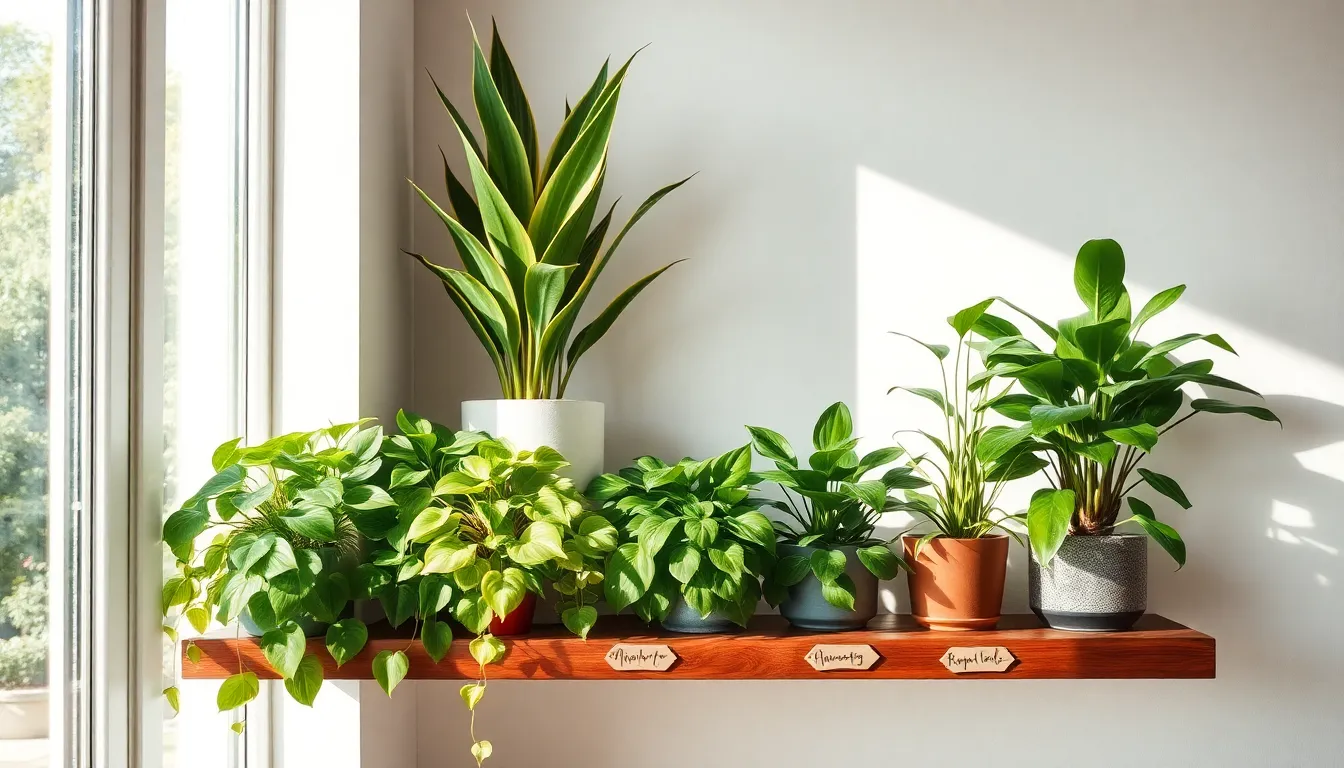Welcome to a world where your indoor spaces transform into lush, thriving sanctuaries with minimal effort! Whether you’re just starting your gardening journey or have years of experience nurturing greenery, our guide to the “Top 10 Indoor Plants for Low Maintenance” is your ticket to enjoying the many rewards of gardening without the hassle. Embrace the joy of watching your home come alive with vibrant leaves and the occasional bloom, all while knowing these plants are as forgiving as they are attractive.
In this guide, you’ll discover plants that are not only easy to care for but also purify your air and enhance your living space’s aesthetic. With our list, you’ll gain practical tips and confidence to effortlessly cultivate a green haven, even if you’re juggling a busy schedule. Let us guide you through these resilient beauties that promise to bring joy and tranquility to your home, proving that successful gardening is within everyone’s reach.
Snake Plant (Sansevieria trifasciata)
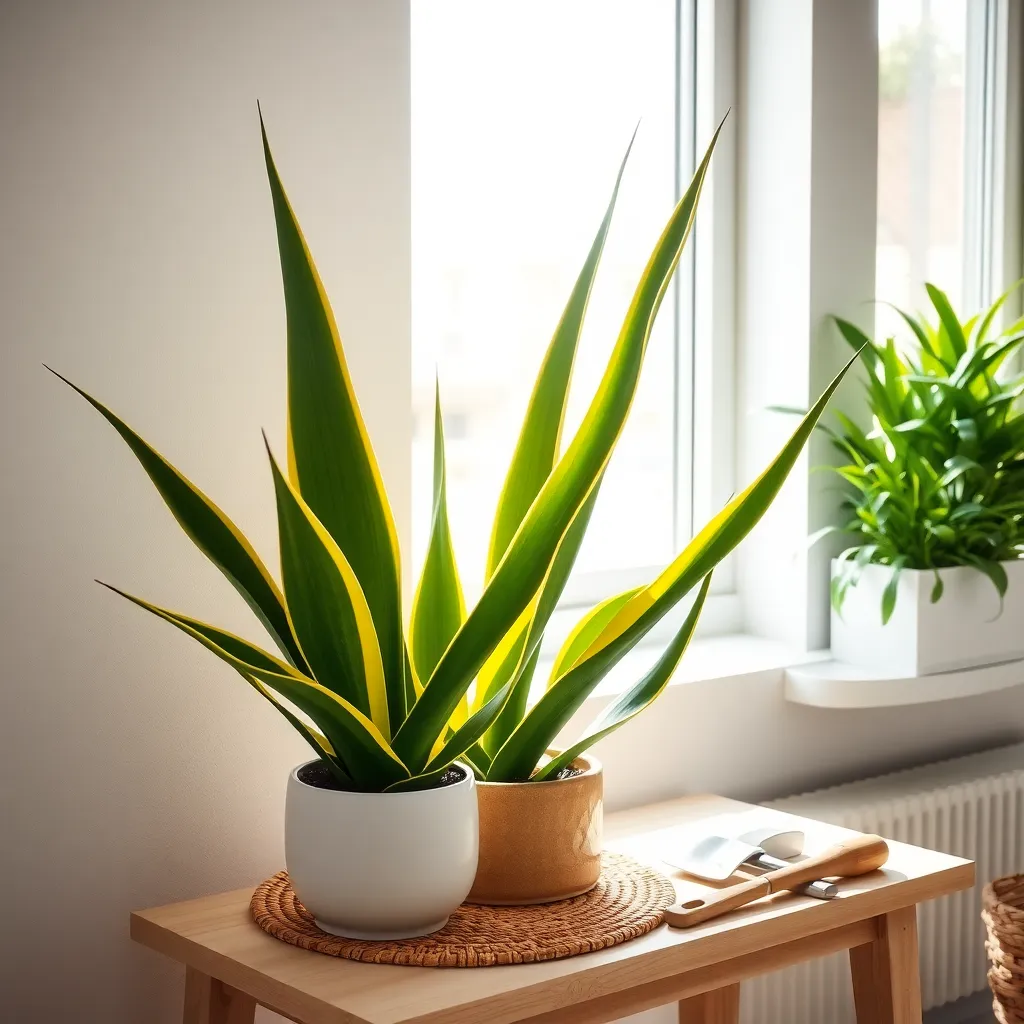
The Snake Plant, also known as Sansevieria trifasciata, is a popular choice for those seeking a low-maintenance indoor plant. Its hardy nature makes it an excellent option for beginners who are just starting their gardening journey.
One of the key advantages of the Snake Plant is its ability to thrive in low-light conditions, making it suitable for nearly any room in your home. It requires well-draining soil; a cactus or succulent mix works perfectly to prevent root rot.
Watering this plant is simple: allow the soil to dry out completely between waterings. Depending on your climate, this might mean watering every two to six weeks, an ideal frequency for busy individuals.
For those looking to dive deeper into plant care, consider placing your Snake Plant in a location with indirect sunlight to encourage growth. While it can tolerate neglect, fertilizing it once a month during the growing season with a balanced liquid fertilizer can promote healthier foliage.
Pothos (Epipremnum aureum)
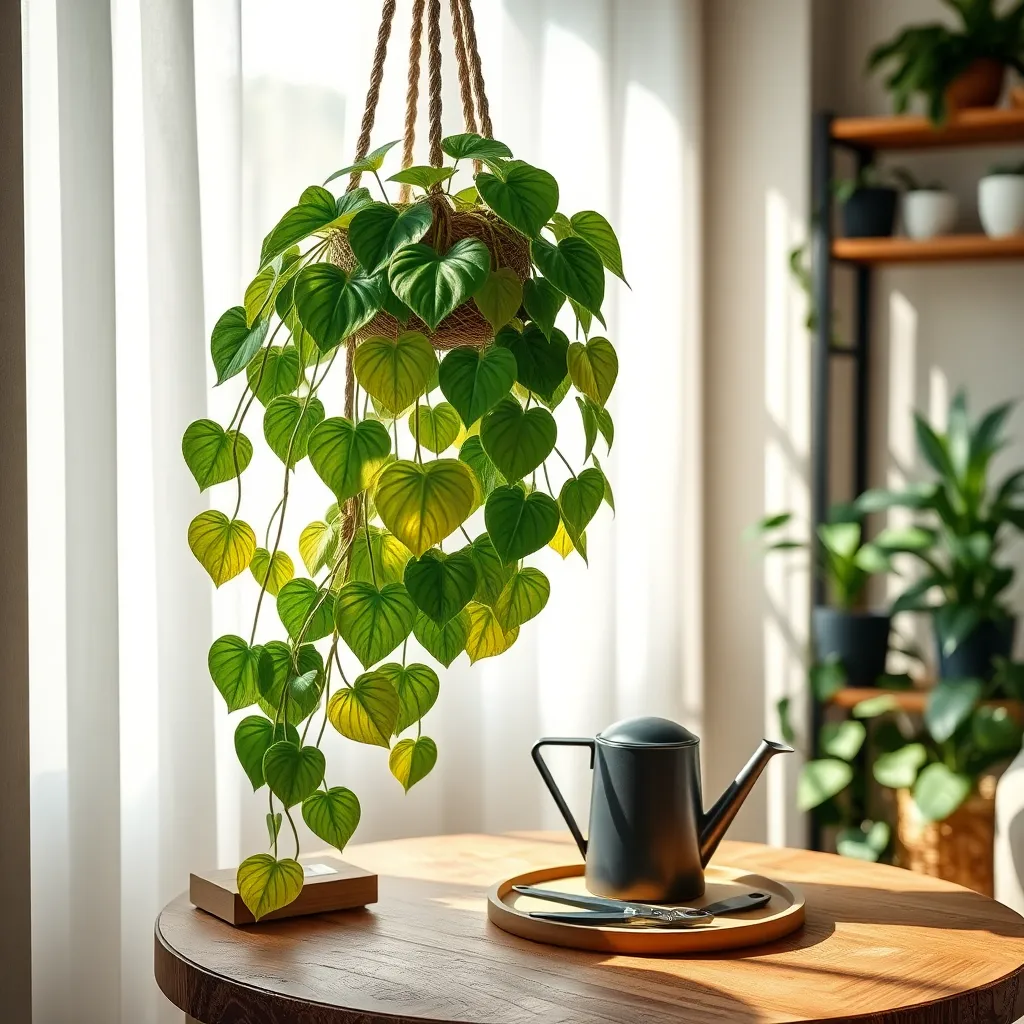
Pothos, or Epipremnum aureum, is a superb choice for those seeking a low-maintenance indoor plant. Known for its resilience, Pothos can thrive in a variety of lighting conditions, including low light, which makes it ideal for virtually any room in the house.
One of the key benefits of Pothos is its ease of care. It requires watering only when the top inch of soil feels dry, typically every 1-2 weeks, which suits busy or forgetful gardeners perfectly.
For best growth, plant Pothos in a well-draining potting mix. A combination of peat moss and perlite works well, ensuring that water can flow freely and the roots remain healthy.
Advanced gardeners might consider propagating Pothos using stem cuttings, which can be easily rooted in water before planting into soil. This allows you to expand your collection or share with friends.
Fertilize Pothos every 4-6 weeks during the growing season with a balanced, water-soluble fertilizer. This will encourage lush foliage and vibrant growth, keeping your plant healthy year-round.
ZZ Plant (Zamioculcas zamiifolia)
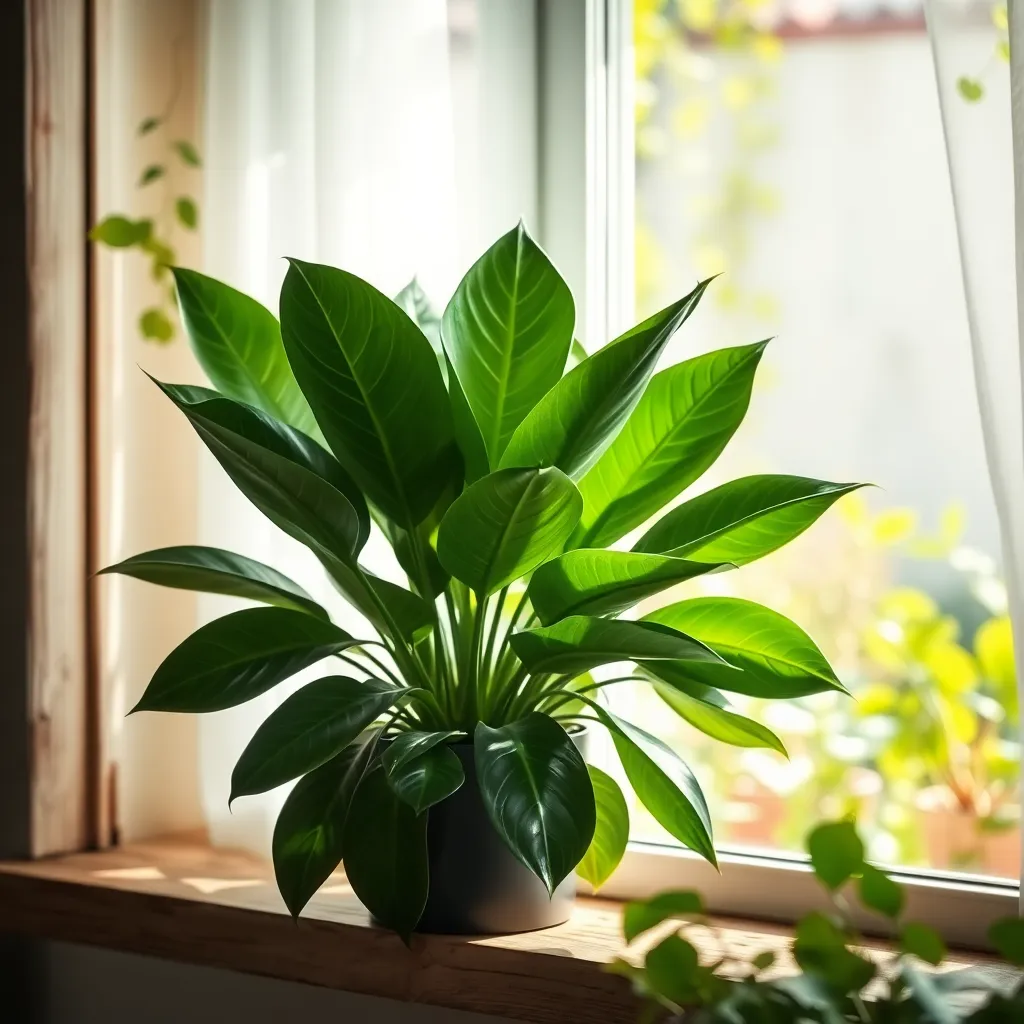
The ZZ Plant, or Zamioculcas zamiifolia, is an excellent choice for those seeking a low-maintenance indoor plant. Known for its glossy, dark green leaves, the ZZ Plant thrives even in low light conditions, making it ideal for rooms with limited sunlight.
When it comes to watering, this plant is quite forgiving, requiring only occasional hydration when the soil is completely dry. Be cautious not to overwater; allowing the soil to dry out completely between waterings will prevent root rot.
For best results, plant your ZZ in a well-draining potting mix, such as one containing perlite or sand. Ensure your pot has drainage holes to allow excess water to escape, promoting a healthy root system.
Advanced growers might consider periodically wiping the leaves with a damp cloth to maintain their shine and help the plant photosynthesize more efficiently. Additionally, fertilizing once a month during the growing season with a balanced liquid fertilizer can provide an extra boost, though this step is not strictly necessary for its survival.
Spider Plant (Chlorophytum comosum)
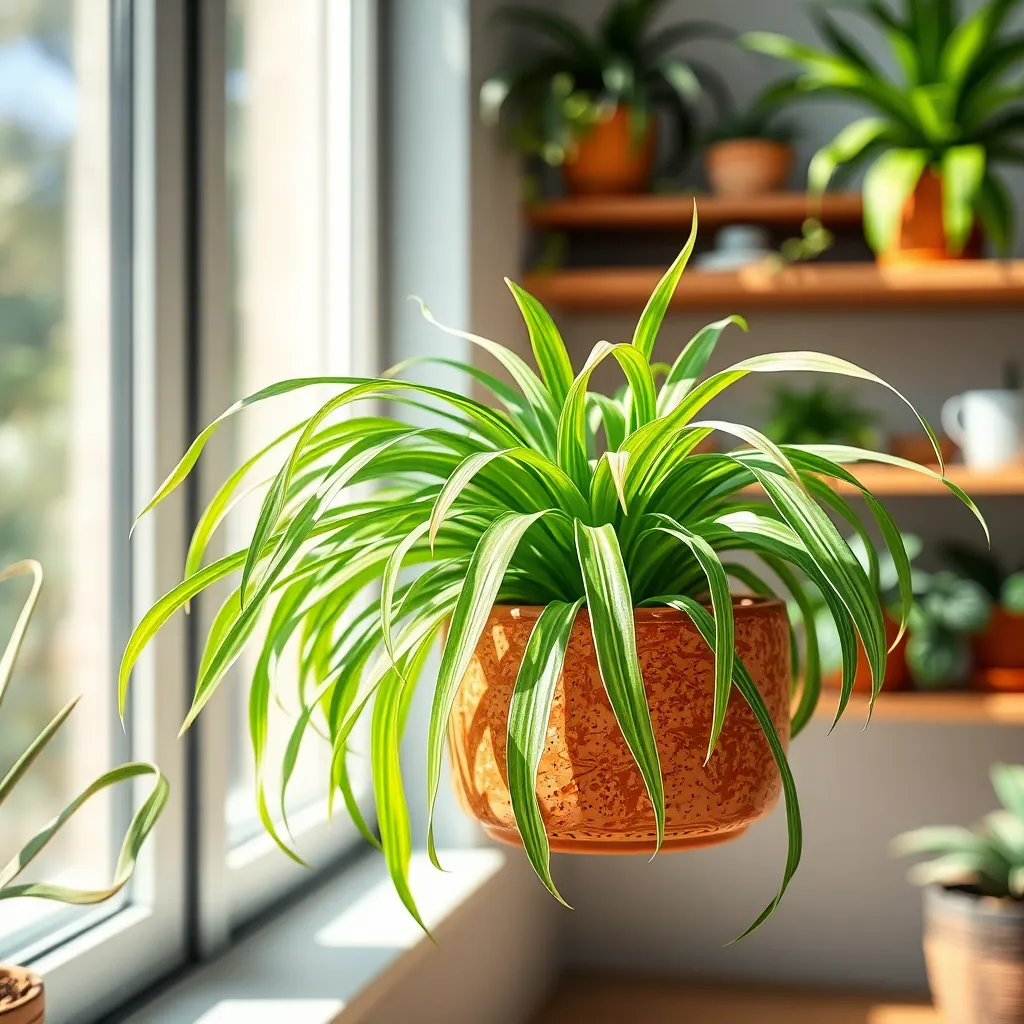
The Spider Plant (Chlorophytum comosum) is a fantastic choice for those seeking a low-maintenance indoor plant with a touch of elegance. Known for its arching leaves and charming plantlets, this plant is perfect for hanging baskets or elevated spots where its beauty can cascade gracefully.
Spider Plants thrive in indirect sunlight, making them ideal for rooms with filtered light or north-facing windows. To keep them healthy, use a well-draining potting mix and water them when the top inch of soil feels dry to the touch.
These plants are forgiving and can tolerate occasional neglect, a trait that makes them appealing to both novice and busy gardeners. However, overwatering can lead to root rot, so it’s crucial to ensure the pot has drainage holes and that you avoid letting the plant sit in water.
For those looking to propagate, Spider Plants offer an exciting opportunity. Simply snip off the plantlets once they develop a few roots, place them in water or soil, and watch them grow into new plants, expanding your indoor garden effortlessly.
Peace Lily (Spathiphyllum wallisii)
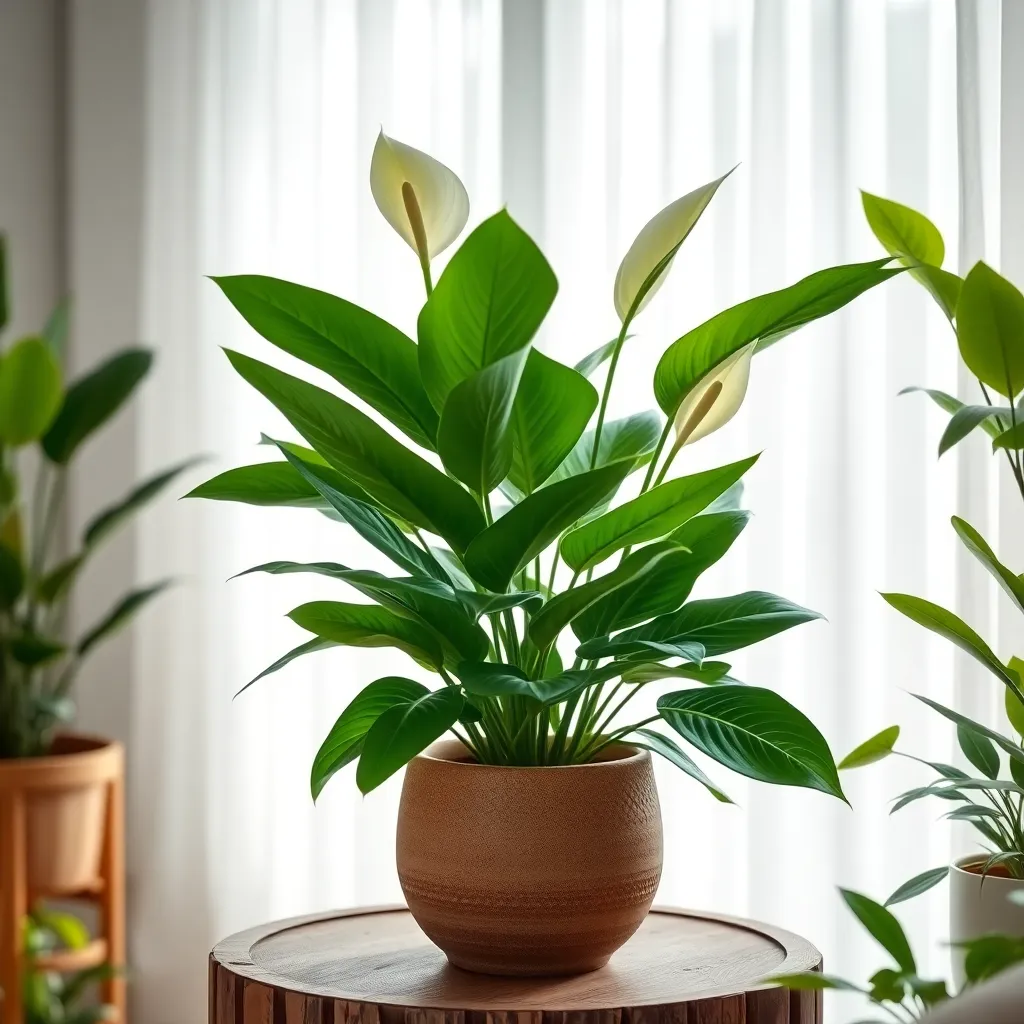
Peace Lily (Spathiphyllum wallisii) is a popular choice for those who desire a touch of elegance with minimal effort. Known for its lush, dark green leaves and stunning white spathes, this plant is not only aesthetically pleasing but also excellent for improving indoor air quality.
Peace Lilies thrive in indirect light, making them perfect for homes with limited sunlight. Place your Peace Lily a few feet away from a window to ensure it receives bright, filtered light without direct exposure that can scorch the leaves.
Watering is crucial for the well-being of your Peace Lily, but it requires less frequent watering than many might expect. Allow the top inch of soil to dry out between waterings, and remember that Peace Lilies are more tolerant of underwatering than overwatering.
For those seeking to up their gardening game, consider using a potting mix that retains moisture yet drains well. A blend of peat moss, pine bark, and perlite is ideal, offering the perfect balance for healthy root development.
Philodendron (Philodendron hederaceum)
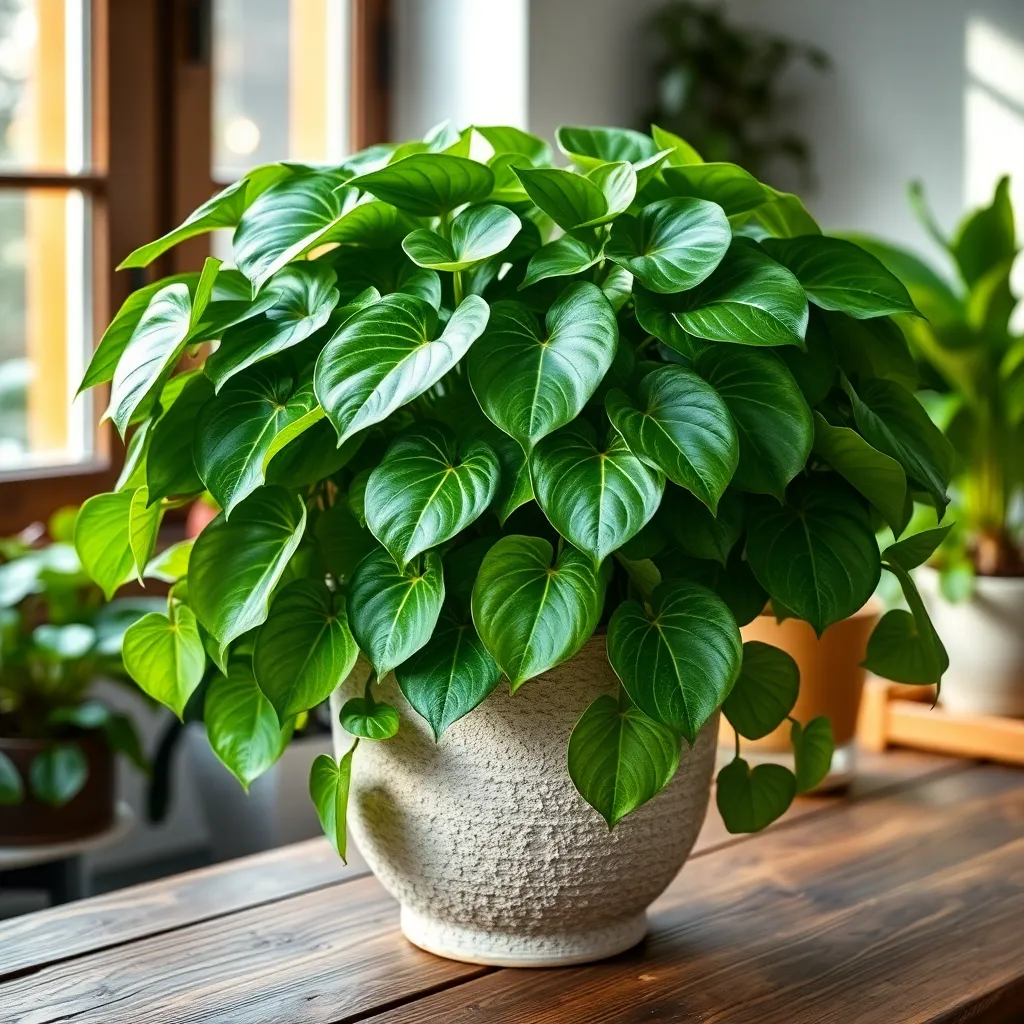
The Philodendron hederaceum, commonly known as the Heartleaf Philodendron, is a fantastic choice for those seeking a low-maintenance indoor plant. With its vibrant green, heart-shaped leaves, this plant can thrive in a variety of lighting conditions, making it ideal for any room in your home.
Ensure your Philodendron is planted in well-draining potting soil to prevent root rot. A mixture of peat-based soil with added perlite or orchid bark will provide the perfect balance for moisture retention and aeration.
Water the plant when the top inch of soil feels dry to the touch, usually about once a week. Overwatering is a common mistake, so it’s crucial to allow the soil to dry out between waterings to maintain plant health.
For those looking to enhance the growth of their Philodendron, consider fertilizing it every month during the growing season with a balanced liquid fertilizer. Additionally, wiping the leaves with a damp cloth periodically will keep them dust-free and ensure they can photosynthesize efficiently.
Rubber Plant (Ficus elastica)
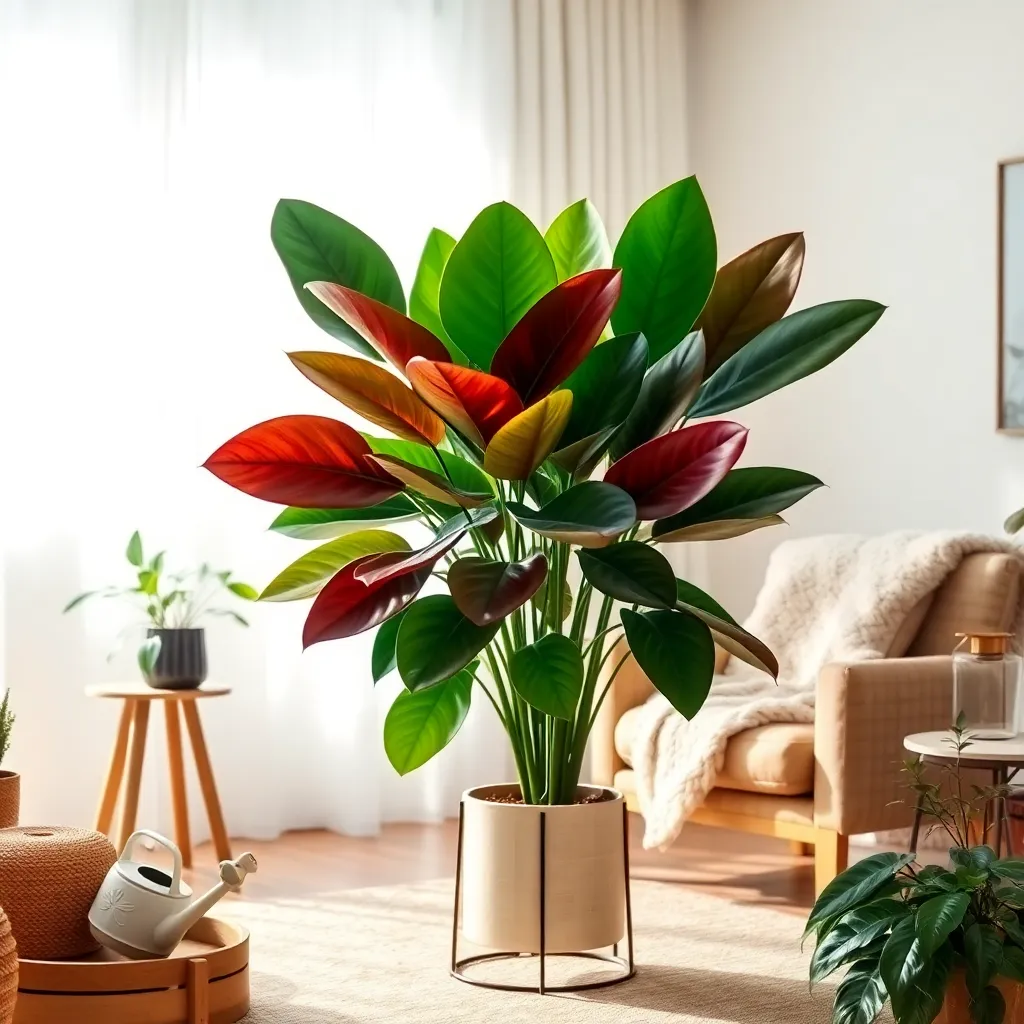
The Rubber Plant (Ficus elastica) is a popular choice for those seeking a striking yet low-maintenance indoor plant. Known for its glossy, dark green leaves, this plant adds a touch of elegance to any room while requiring minimal care.
When it comes to growing conditions, the Rubber Plant thrives in bright, indirect light but can also adapt to lower light levels. To maintain healthy growth, it’s advisable to use a well-draining potting mix, such as a peat-based soil combined with perlite or coarse sand.
Watering should be done when the top inch of the soil feels dry to the touch, typically every 1-2 weeks depending on the humidity of your home. Overwatering can lead to root rot, so ensure the pot has drainage holes to allow excess water to escape.
For more advanced care, consider wiping the leaves regularly with a damp cloth to remove dust and enhance their natural shine. Additionally, feeding the plant with a balanced liquid fertilizer every four weeks during the growing season can promote robust growth.
By following these simple guidelines, your Rubber Plant will thrive, creating a lush, green focal point in your home with minimal effort. The combination of aesthetic appeal and easy care makes it an excellent choice for both novice and experienced gardeners alike.
Chinese Evergreen (Aglaonema commutatum)
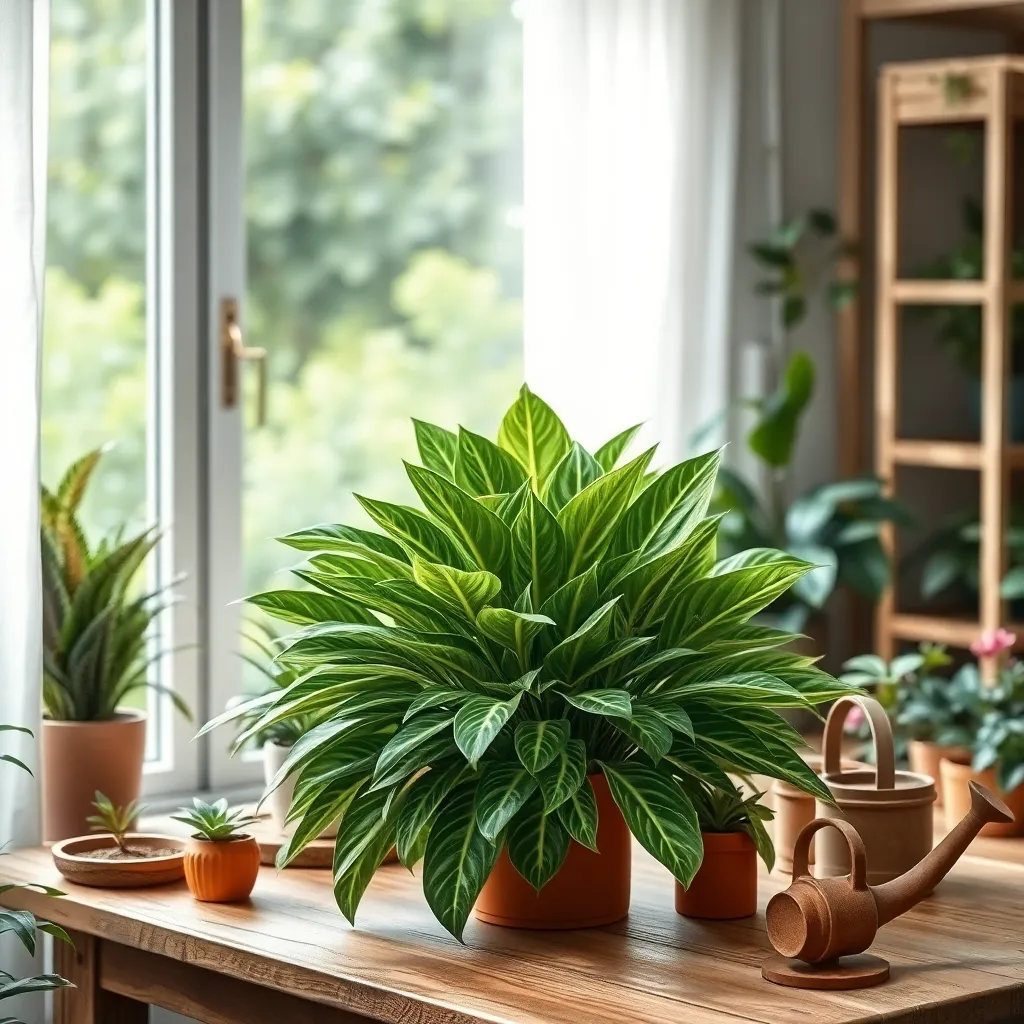
Chinese Evergreen, or Aglaonema commutatum, is a popular choice for those seeking a low-maintenance indoor plant with striking foliage. This resilient plant thrives in a variety of lighting conditions, making it ideal for both well-lit and dimly lit rooms.
To ensure optimal growth, plant your Chinese Evergreen in a well-draining potting mix, such as a peat-based soil amended with perlite or sand. It’s important to water the plant moderately, allowing the top inch of soil to dry out between waterings to prevent root rot.
For beginners, the Chinese Evergreen’s tolerance to irregular watering and low light is a major advantage. However, for those looking to enhance their plant’s vibrancy, placing it in indirect sunlight can help maintain its colorful leaves.
Advanced gardeners can increase humidity around the plant by misting it regularly or placing it on a pebble tray with water, particularly during the drier months. Fertilize your Chinese Evergreen every two months with a balanced liquid fertilizer to promote healthy growth and lush foliage.
Jade Plant (Crassula ovata)
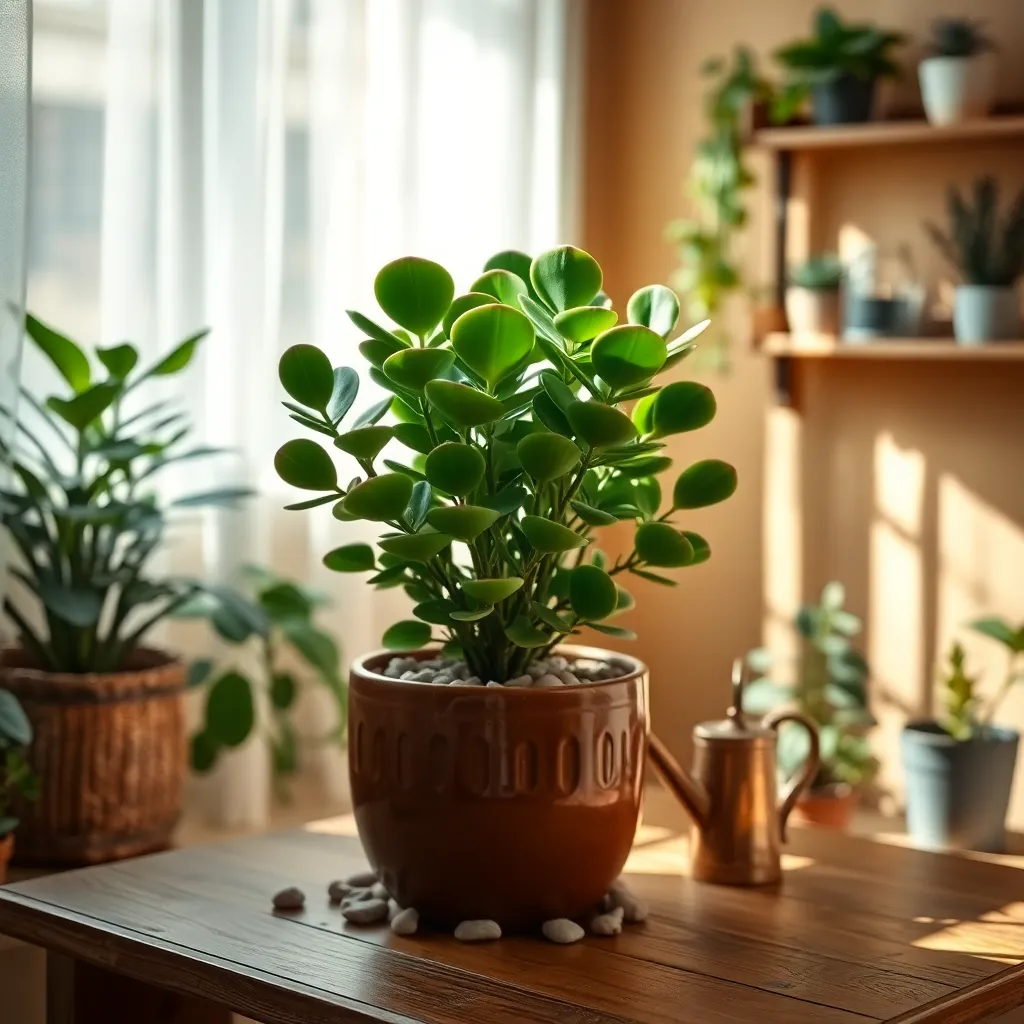
Jade Plant (Crassula ovata) is a popular choice for those seeking a low-maintenance indoor plant. It thrives in a variety of conditions, making it ideal for both beginners and seasoned gardeners.
These succulents prefer bright, indirect light; however, they can adapt to lower light levels. To ensure healthy growth, place your jade plant near a south-facing window, but protect it from harsh, direct sunlight which can scorch the leaves.
Watering is key to keeping your jade plant thriving. Allow the soil to dry out completely between waterings to prevent root rot. A good rule of thumb is to water every 2-3 weeks, adjusting based on the season and humidity levels.
For optimal growth, use a well-draining cactus or succulent potting mix. Adding perlite or sand can improve drainage, preventing water from sitting at the roots. Fertilize sparingly; a balanced liquid fertilizer diluted to half strength can be applied during the growing season.
Pruning can help maintain a desirable shape and encourage bushier growth. Simply pinch off the tips or use clean, sharp scissors to trim the stems. This plant is also easy to propagate—just plant a leaf or stem cutting in soil, and it will root within a few weeks.
Cast Iron Plant (Aspidistra elatior)
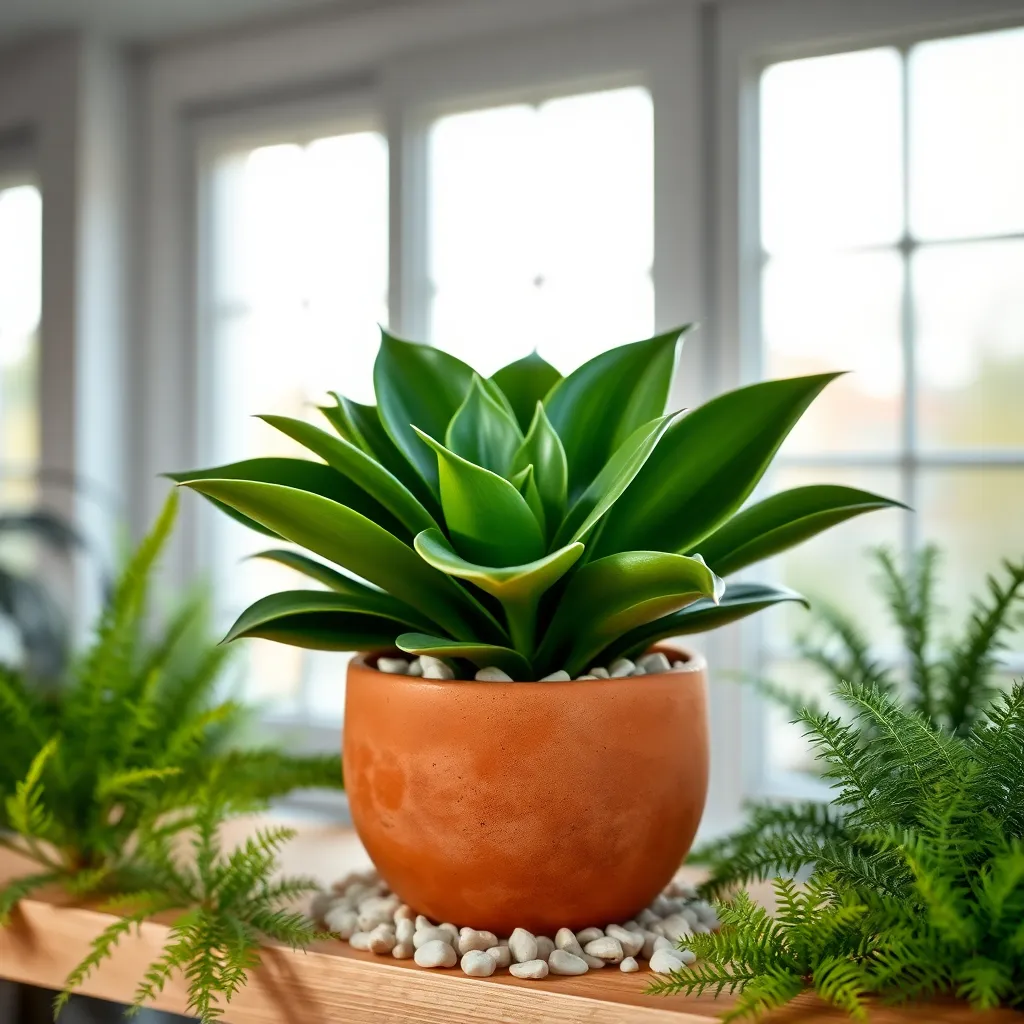
The Cast Iron Plant (Aspidistra elatior) is renowned for its resilience, making it an ideal choice for those seeking a low-maintenance indoor plant. This plant thrives in low light conditions, making it perfect for any room in your home where sunlight is scarce.
To ensure optimal growth, plant your Aspidistra in well-draining soil, such as a standard potting mix with added perlite or sand. Water the plant sparingly, allowing the top inch of soil to dry out between waterings to prevent root rot.
Aspidistra elatior is tolerant of a wide range of temperatures, but it prefers a consistent indoor range between 60°F and 75°F. Avoid placing it near drafty windows or radiators, as sudden temperature changes can stress the plant.
For those looking to give their Cast Iron Plant a little extra care, consider wiping the leaves with a damp cloth occasionally to remove dust and enhance its natural shine. Fertilize sparingly with a balanced liquid fertilizer every few months during the growing season to support its slow growth.
Conclusion: Growing Success with These Plants
In exploring the top 10 indoor plants perfect for those seeking low-maintenance greenery, we delved into the core relationship concepts that these plants metaphorically represent. From the resilient Snake Plant, symbolizing the importance of perseverance, to the adaptable Spider Plant, reminding us of the value of flexibility, each plant offers a unique lesson. The ZZ Plant teaches us the power of patience, while the Peace Lily encourages us to cultivate harmony. The Aloe Vera emphasizes healing, the Pothos highlights the need for growth, and the Philodendron embodies the beauty of nurturing. The Calathea, with its vibrant leaves, invites us to appreciate diversity, the Jade Plant stands for prosperity in relationships, and the Rubber Plant underscores the necessity of strong foundations.
As your next step, choose one plant that resonates with you and introduce it into your living space, allowing its lessons to subtly influence your connections. Remember, nurturing plants and relationships requires patience and care. Bookmark this article as a handy guide for these insightful reminders. By integrating these botanical lessons into your interactions, you pave the way for flourishing relationships that thrive on understanding and growth. Let’s cultivate connections that are as enduring and beautiful as the plants we cherish.

